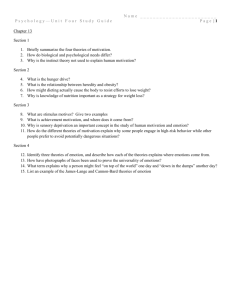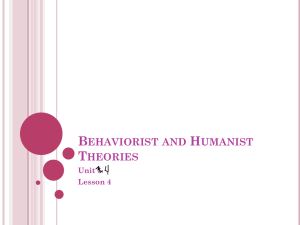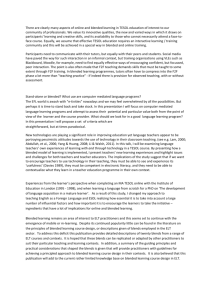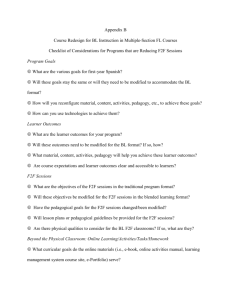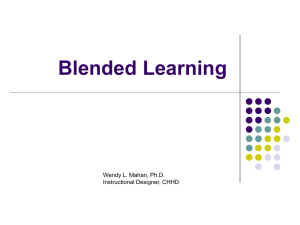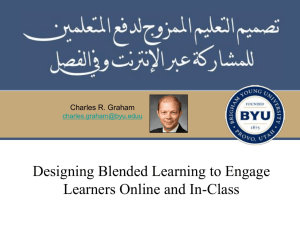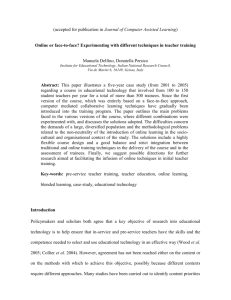Integration Chart - Blended Learning Toolkit
advertisement
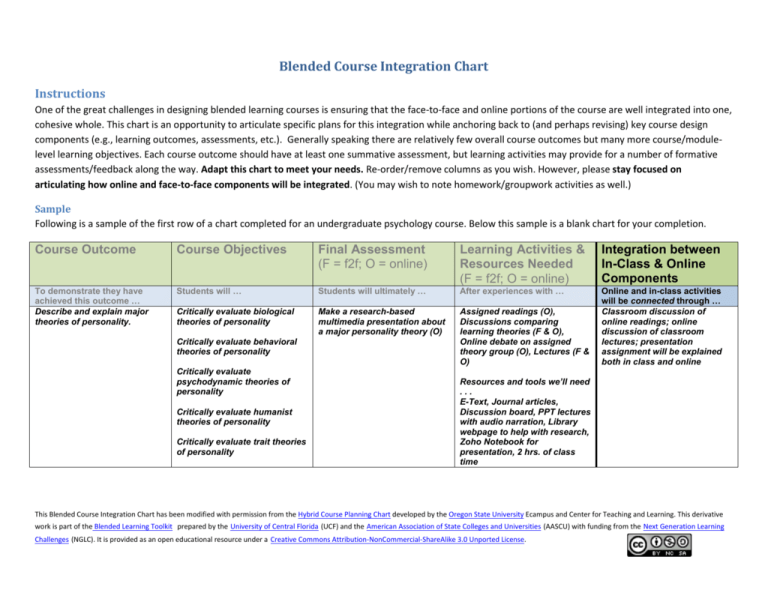
Blended Course Integration Chart Instructions One of the great challenges in designing blended learning courses is ensuring that the face-to-face and online portions of the course are well integrated into one, cohesive whole. This chart is an opportunity to articulate specific plans for this integration while anchoring back to (and perhaps revising) key course design components (e.g., learning outcomes, assessments, etc.). Generally speaking there are relatively few overall course outcomes but many more course/modulelevel learning objectives. Each course outcome should have at least one summative assessment, but learning activities may provide for a number of formative assessments/feedback along the way. Adapt this chart to meet your needs. Re-order/remove columns as you wish. However, please stay focused on articulating how online and face-to-face components will be integrated. (You may wish to note homework/groupwork activities as well.) Sample Following is a sample of the first row of a chart completed for an undergraduate psychology course. Below this sample is a blank chart for your completion. Course Outcome Course Objectives Final Assessment (F = f2f; O = online) Learning Activities & Resources Needed (F = f2f; O = online) Integration between In-Class & Online Components To demonstrate they have achieved this outcome … Describe and explain major theories of personality. Students will … Students will ultimately … After experiences with … Critically evaluate biological theories of personality Make a research-based multimedia presentation about a major personality theory (O) Assigned readings (O), Discussions comparing learning theories (F & O), Online debate on assigned theory group (O), Lectures (F & O) Online and in-class activities will be connected through … Classroom discussion of online readings; online discussion of classroom lectures; presentation assignment will be explained both in class and online Critically evaluate behavioral theories of personality Critically evaluate psychodynamic theories of personality Critically evaluate humanist theories of personality Critically evaluate trait theories of personality Resources and tools we’ll need ... E-Text, Journal articles, Discussion board, PPT lectures with audio narration, Library webpage to help with research, Zoho Notebook for presentation, 2 hrs. of class time This Blended Course Integration Chart has been modified with permission from the Hybrid Course Planning Chart developed by the Oregon State University Ecampus and Center for Teaching and Learning. This derivative work is part of the Blended Learning Toolkit prepared by the University of Central Florida (UCF) and the American Association of State Colleges and Universities (AASCU) with funding from the Next Generation Learning Challenges (NGLC). It is provided as an open educational resource under a Creative Commons Attribution-NonCommercial-ShareAlike 3.0 Unported License. Blended Course Integration Chart Instructor Name: Course Title: Course Description: Course Outcome Course Objectives Final Assessment (F = f2f; O = online) Learning Activities & Resources Needed (F = f2f; O = online) Integration between In-Class & Online Components To demonstrate they have achieved this outcome … Students will … Students will ultimately … After experiences with … Online and in-class activities will be connected through … This Blended Course Integration Chart has been modified with permission from the Hybrid Course Planning Chart developed by the Oregon State University Ecampus and Center for Teaching and Learning. This derivative work is part of the Blended Learning Toolkit prepared by the University of Central Florida (UCF) and the American Association of State Colleges and Universities (AASCU) with funding from the Next Generation Learning Challenges (NGLC). It is provided as an open educational resource under a Creative Commons Attribution-NonCommercial-ShareAlike 3.0 Unported License.
